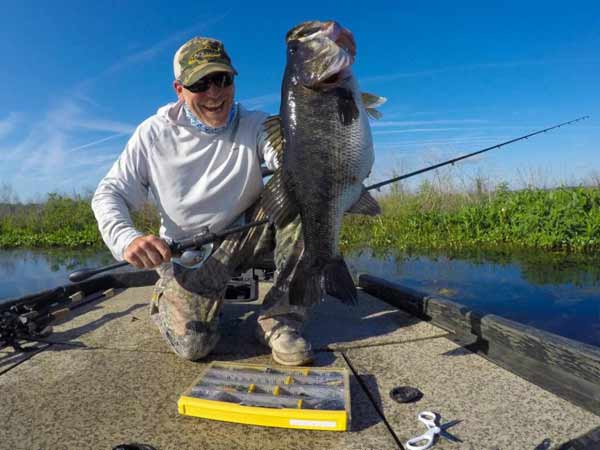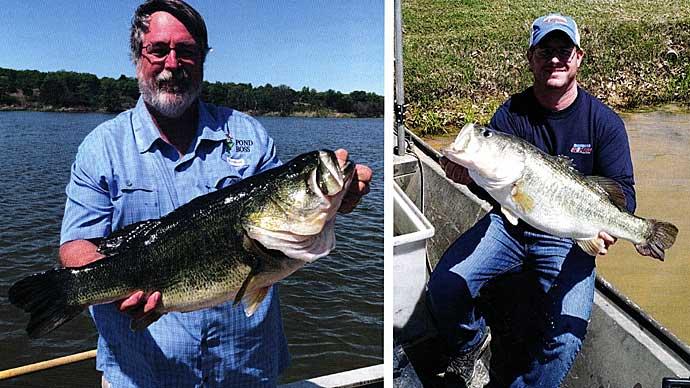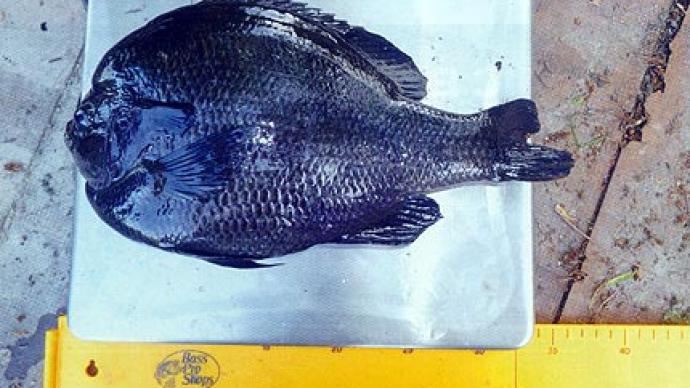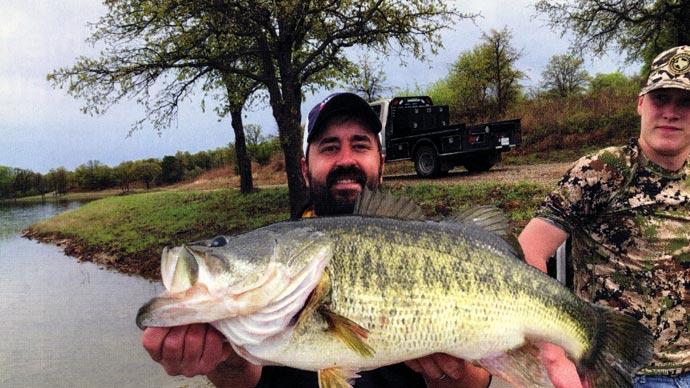
On the Pond Boss Forum recently there have been discussions on adaptation vs. evolution. This conversation thread centered around how fish change, what is the mechanism (environment or genetics), and how long does it take. In science class we all learned about Darwin's theories regarding evolution. We were taught that evolution is a slow, gradual process. Darwin wrote, "...Natural selection acts only by taking advantage of slight successive variations; she can never take a great and sudden leap, but must advance by short and sure, though slow steps." Parts of Darwin's Theory of Evolution are now a theory in crisis in light of the recent tremendous advances in molecular biology, biochemistry, and genetics. Darwin's prediction was right on a geological scale (Earth's age) but it has since been shown that evolution of species can happen much faster. In bacteria and insects, single generation change is known to occur. In more advanced species (fish and larger creatures), it was thought that things are more gradual, but still, do occur in sudden bursts.
While evolution was thought to be a slow process, adaptation refers to the relatively quick process where, through phenotypic plasticity, certain groups or individuals change to be better suited to their environment and habitat. The thought is change is needed quickly so that they can survive and maintain normal function. In a prior Cutting-Edge column, we discussed this concept described in The Effect of Vegetation Density on Juvenile Bluegill Diet and Growth in the Journal of Freshwater Ecology 2012,1-11 by Daniel E. Shoup, Michael A. Nannini and David H. Wahl.
In that study, environmental conditions during early bluegill development shaped individuals' phenotypes so they were more adaptive to the conditions they encountered. Plasticity has been shown to affect sunfish (Lepomis) shape, feeding, and behavior in some cases. Here, by the end of the three-month experiment, bluegill from the low vegetation ponds were significantly longer-twenty (20%) percent than bluegill from the highly vegetated ponds. Were the long bluegill that fed in open water that way because longer fish can swim better in open water and were the shorter bluegill that way because being short allows them to maneuver around the weeds better? In this case a clear finding of adaptation in bluegill happened in only three months.
Adaptation (through phenotypic plasticity) is the emergence of new characteristics in order to best suit the changes in the environment or habitat. Adaptation arises at the phenotypic level under the influence of environmental factors on the expression of the existing genes. It has become increasingly clear however, that phenotypic plasticity actually represents a fundamental component of evolutionary change. More questions arise like; What time period is required and what is the mechanism to get from adaptation to genetic change? Now some new thoughts-that genetics can be changed in early development through environmental influences, similar to what we saw in the above study on bluegill.
A recent study titled, Using Teleost Fish to Discern Developmental Signatures of Evolutionary Adaptation from Phenotypic Plasticity in Brain Structure by Zachary J. Hall and Vincent Tropepe in Front. Neuroanat. 14:10.18 March 2020 is illustrative. This study looked at brain development in teleost fish (ray- finned fishes) like those common in ponds.
In the past, the impact of evolution on the brain has been studied by comparing the sizes of brain regions between species or. in some cases, the same species. However, more recent work has demonstrated that environmental factors such as sensory experience influence brain region sizes intraspecifically (in the same species).
This brings into question the distinction between evolution (genetic) and adaptive (environment) sources of brain anatomy variation in fish species.
The authors examined how newer fish research indicates the capacity for environment to shape brain structure similarly within a species. Some of the first evidence demonstrating the capacity of the environment to shape fish brain structure came from comparisons between related wild-caught and lab-reared fish populations. The noted studies finding salmon reared in a hatchery exhibit reduced olfactory bulb (smell function) and brain size compared to age-matched wild salmon from the same genetic cohort and also finding that first-generation female guppies reared in the laboratory from wild parents exhibited reduced fore-brain and vision processing compared to wild-caught fish. Because the laboratory environment generally lacks much of the sensory stimuli animals would encounter in the wild, these findings suggest that brain development in fish is influenced by sensorimotor experiences. In another study both male guppies collected from regions of high predation and laboratory-reared male guppies exposed to sight and smell predator cues during development have larger brains as adults compared to unexposed males.
Another more recent method of studying fish brain development has been to compare fish populations of the same species inhabiting different environments. These studies revealed habitat-dependent brain size findings similar to studies comparing lab- and wild-bred populations. For example, whole-brain size is larger in sunfish that occupy a littoral shoreline habitat vs. those that live in a pelagic habitat.
The discovery of continuing adult brain neurogenesis in mammals demonstrates that adaptive processes continue to shape the brain well beyond embryonic development. Because fish exhibit extensive neurogenesis in the brain throughout life as compared to mammals it is more likely a life-long process for brain growth in fish. These developments in embryonic and whole life brain development in fish resulting from environmental conditions (adaptation) is proof that adaptive change (through phenotypic plasticity) is quicker, more powerful, and far more prevalent than previously thought.



